Kealia Pond National Wildlife Refuge, Part 2
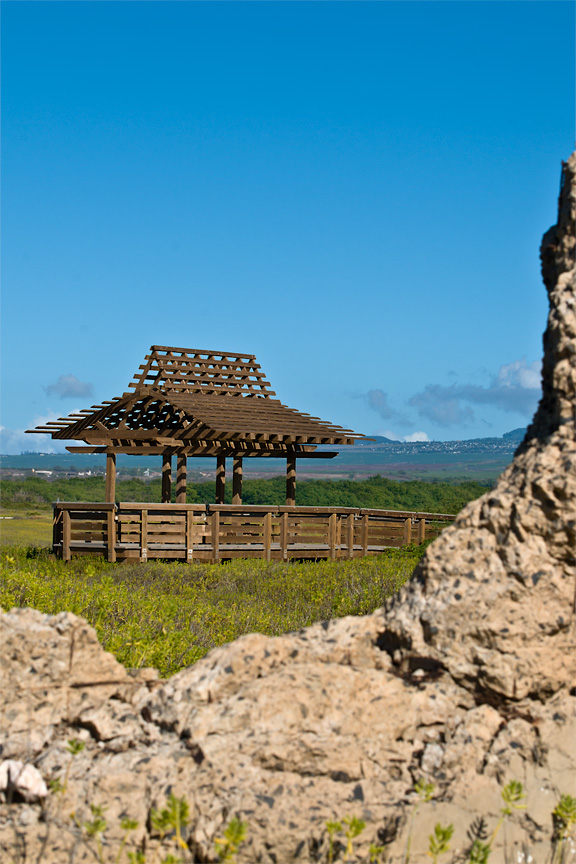 At the north end of the boardwalk is an observation deck — perfect for watching the goings-on of any of the creatures doing their thing in the marsh. It is also a great spot for studying the vistas of central Maui — the valley between Haleakala and the West Maui Mountains — the valley that gives Maui its nickname of "The Valley Isle".
At the north end of the boardwalk is an observation deck — perfect for watching the goings-on of any of the creatures doing their thing in the marsh. It is also a great spot for studying the vistas of central Maui — the valley between Haleakala and the West Maui Mountains — the valley that gives Maui its nickname of "The Valley Isle".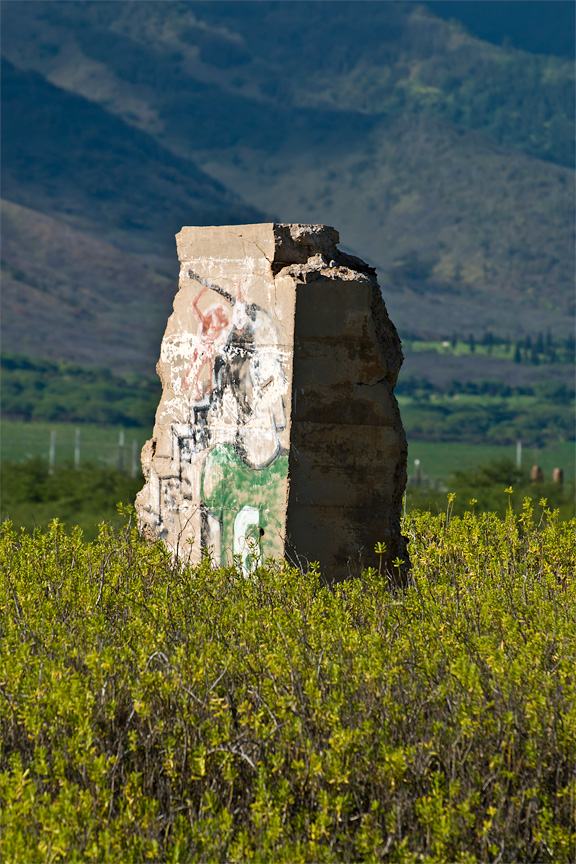 From that vantage point, this monolith caught my eye, requiring further investigation. It was in such a state of decomposition that I could not tell what it had been originally. Perhaps a small building for storing whatever. Quite obviously, it is now a canvas for graffiti.
From that vantage point, this monolith caught my eye, requiring further investigation. It was in such a state of decomposition that I could not tell what it had been originally. Perhaps a small building for storing whatever. Quite obviously, it is now a canvas for graffiti.
 Looking up toward the Pali is a recent addition — wind turbines catching the trade winds to generate electricity for the island. As any golfer can tell you, the trade winds blow nearly every day on Maui — which is not a virtue from the golfer's point of view but which can supply much needed energy for Maui.
Looking up toward the Pali is a recent addition — wind turbines catching the trade winds to generate electricity for the island. As any golfer can tell you, the trade winds blow nearly every day on Maui — which is not a virtue from the golfer's point of view but which can supply much needed energy for Maui.
Most of the electricity is generated via diesel generators located nearby — on the other side of N. Kihei Road from the Refuge. Remember that Hawai`i is the most isolated island chain in the world and that there are no oil deposits here — thus requiring that every drop of that diesel be imported from the mainland or a foreign refinery.
Therefore any electricity generated by wind reduces the amount of diesel that must be imported. I understand that the wind turbines are now providing approximately 10% of Maui's electrical needs. It has been so successful that there are plans to double the number of wind turbines further reducing diesel consumption.
Curiously, during the mid-1980s when I lived on Maui, there was a wind turbine constructed at the diesel power plant mentioned above. It turned out to require too many repairs to keep it operating cost-effectively and was eventually removed. Let's hope these turbines will prove cost-effective in the long run.
 Looking to the north are the condos located at Ma`alaea where there is a good size harbor. Unfortunately, from the tourist's point of view, this area is very windy — which is why the aforementioned wind turbines are sited nearby. This is a result of the two mountains that pinch the trade winds flowing through the valley — resulting in greater wind velocity. This phenomenon is called the Bernoulli Effect.
Looking to the north are the condos located at Ma`alaea where there is a good size harbor. Unfortunately, from the tourist's point of view, this area is very windy — which is why the aforementioned wind turbines are sited nearby. This is a result of the two mountains that pinch the trade winds flowing through the valley — resulting in greater wind velocity. This phenomenon is called the Bernoulli Effect. 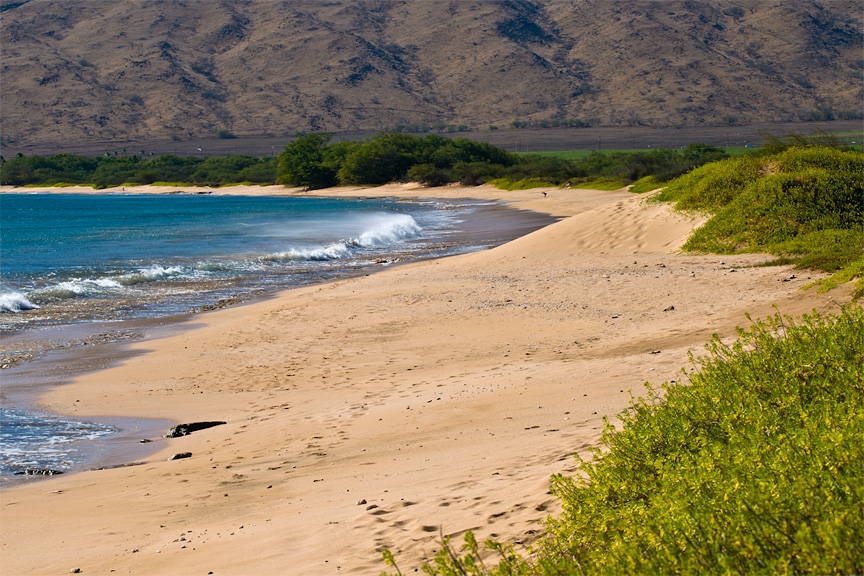 Ah, the beach looking north. Maui has no shortage of attractive beaches — and this one is nearly deserted except for the occasional jogger.
Ah, the beach looking north. Maui has no shortage of attractive beaches — and this one is nearly deserted except for the occasional jogger.I don't know about you but I love scenes of old man-made alterations to the environment that are in the process of being reclaimed by Mother Nature. Perhaps this one is simply a reminder of my childhood visits to Ocean City, Maryland and the sand fences used to control the erosion of sand dunes there. In both places, the sand fences eventually give way to dunes with grasses and other plants that help anchor the sand against the wind and waves.
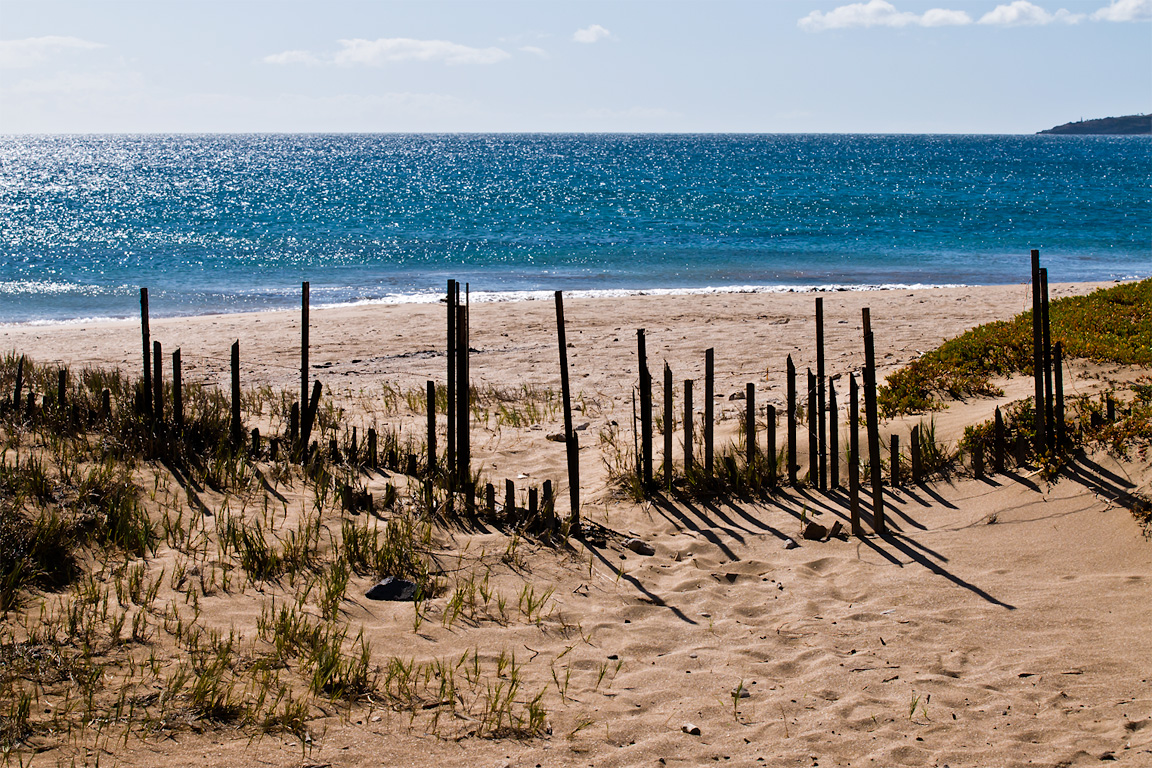
 Looking to the south, the beach shows some lava rock outcroppings as well as the ubiquitous keawe trees.
Looking to the south, the beach shows some lava rock outcroppings as well as the ubiquitous keawe trees. You may have spotted these in the previous photo and wondered what they are. Here is a closer photo and you may still wonder what they are. I have no idea. Maybe someone will educate me.
You may have spotted these in the previous photo and wondered what they are. Here is a closer photo and you may still wonder what they are. I have no idea. Maybe someone will educate me.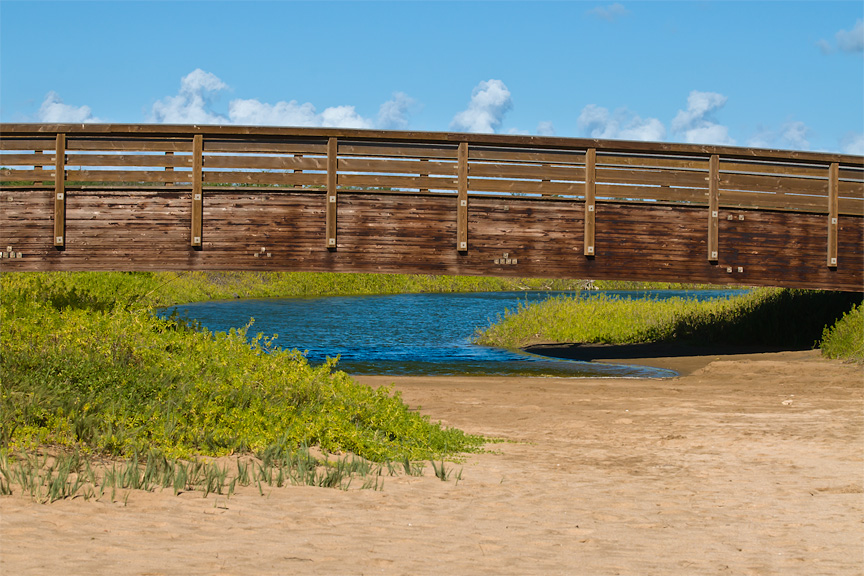 As I trudged along the sand, I spotted the bridge that I had crossed over earlier. Note that the river "ends" at the beach. Of course, the water from the river will seep through the sand — and if a storm hits, I suspect the sand will erode to allow the river to drain its excess before eventually damming it up again.
As I trudged along the sand, I spotted the bridge that I had crossed over earlier. Note that the river "ends" at the beach. Of course, the water from the river will seep through the sand — and if a storm hits, I suspect the sand will erode to allow the river to drain its excess before eventually damming it up again.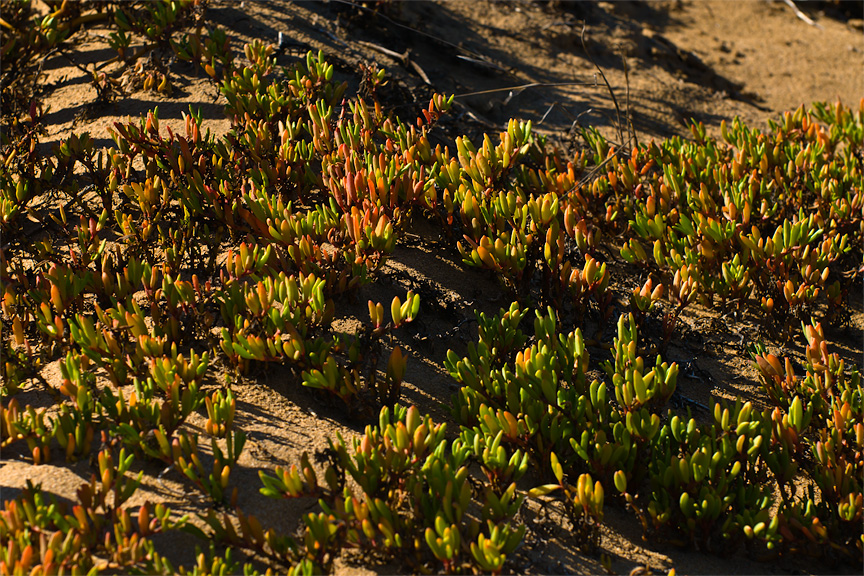 The hour is late and the sun is low. But what a great combination to illuminate this ice plant growing on the dunes. A wonderful way to end the visit to Kealia Pond.
The hour is late and the sun is low. But what a great combination to illuminate this ice plant growing on the dunes. A wonderful way to end the visit to Kealia Pond.